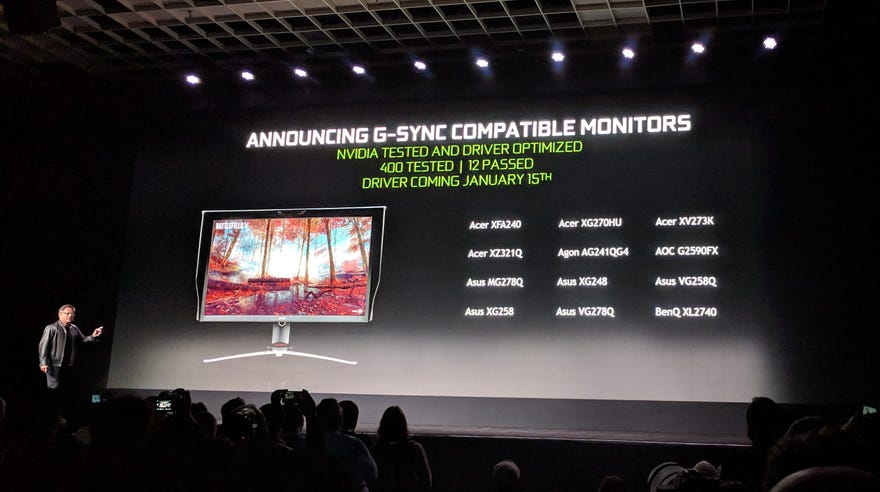Nvidia's list of official G-Sync Compatible monitors grows to 17
Two more Asus monitors join the fold
Nvidia have added another two screens to their list of G-Sync Compatible monitors. The pair of new additions are both Asus monitors - the 25in 1920x1080 VG258 and 27in 1920x1080 VG278QR - taking the total number of adaptive sync / AMD FreeSync screens that can offer a watered-down version of Nvidia's own variable refresh rate G-Sync tech without falling to pieces to seventeen. That's not all, either, as Nvidia's latest Game Ready driver also adds in G-Sync Compatible support for their multi-monitor tech, Nvidia Surround, too, meaning you can now run three G-Sync Compatible monitors simultaneously.
Much like the rest of their G-Sync Compatible cohort, the two new Asus monitors will only offer their G-Sync compatibility within a set refresh rate range - that is, their original AMD FreeSync range. The good news is that both monitors have a slightly wider FreeSync range than usual. Whereas a lot of FreeSync monitors kick in at 48fps, these two Asus models start at a nice round 40fps, and go all the way up to their maximum refresh rate of 144Hz / 165Hz. That means that if your graphics card is only doing 30fps, for example, then you're not going to get the benefit.
Still, it's heartening to see more monitors gradually make their way onto Nvidia's very select list, and the complete list of Nvidia G-Sync Compatible monitors now stands as follow:
- Acer XV273K
- Acer ED273A
- Acer XFA240
- Acer XF250Q
- Acer XG270HU
- Acer XZ321Q
- AOC AGON AG241QX
- AOC G2590FX
- BenQ XL2540
- BenQ XL2740
- Asus MG278Q
- Asus XG248Q
- Asus XG258Q
- Asus VG258Q
- Asus VG258QR
- Asus VG278Q
- Asus VG278QR
G-Sync, in case you've forgotten, is Nvidia's special refresh rate standard that helps keep games looking nice and smooth by dynamically adjusting your monitor's refresh rate to match the number of frames being spat out by your graphics card. This helps cut down on screen tearing and unwanted stutter, but until recently you needed both an Nvidia graphics card and an Nvidia G-Sync monitor to take advantage of it.
Now, thanks to Nvidia's recent driver update, Nvidia graphics card owners can get a sort-of G-Sync experience (there are still a few unique things you'll get with a proper G-Sync screen - see our best gaming monitor list for more info) on AMD FreeSync monitors. Nvidia have been busy testing every current FreeSync screen under the sun to see how they hold up, and the 17 monitors listed above have been deemed worthy of their official G-Sync Compatible status.
Other FreeSync screens still work with the driver, I might add, but the experience can vary quite drastically, with some monitors causing black frames to appear every now and again, while others pulse or have trouble with maintaining a steady brightness. As such, if you're looking for the best G-Sync experience without shelling out for a proper G-Sync monitor, the 17 gaming monitors above are your best bet.

